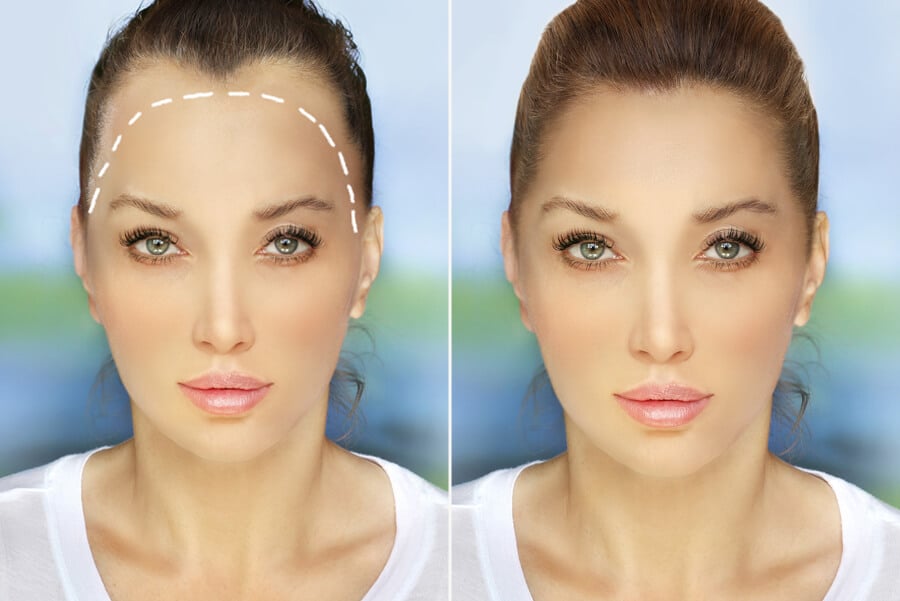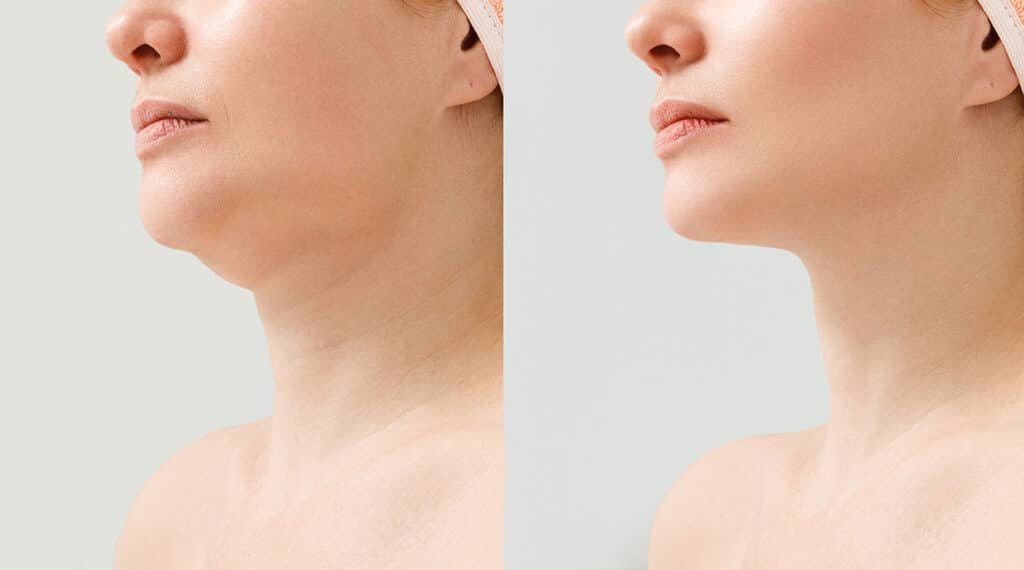Morpheus8 stands at the forefront of innovative aesthetic treatments, merging microneedling with radiofrequency technology to redefine and contour the face and body. This minimally invasive procedure stimulates collagen production, targeting deeper layers of the skin for a firmer, smoother appearance. Ideal for those seeking a non-surgical approach to address signs of aging or scarring, Morpheus8 offers a unique solution that bridges the gap between traditional procedures and modern technology. With its ability to deliver noticeable results with minimal downtime, it’s no wonder why Morpheus8 has become a sought-after treatment for individuals aiming for rejuvenated skin.
Understanding Morpheus8 and Its Benefits
Skin Rejuvenation
Morpheus8 is a cutting-edge treatment. It combines microneedling with radiofrequency. This blend targets the skin’s deeper layers.
The process stimulates collagen production. Collagen is key for youthful, elastic skin. The increase in collagen smooths out wrinkles and fine lines.
Targeted Treatment
Morpheus8 effectively treats various skin issues. These include acne scars, wrinkles, and sagging skin.
By reaching deeper into the skin, it ensures long-lasting results. Patients often see improvements after just one session.
Key Benefits
There are several benefits to choosing Morpheus8:
- Reduced acne scars: The treatment breaks down scar tissue.
- Smoothed wrinkles: Enhanced collagen production fills in lines.
- Tightened skin: Sagging areas become firmer.
Patients appreciate these outcomes without needing surgery.
The Procedure of Morpheus8 Microneedling
Topical Anesthesia
Before starting the Morpheus8 procedure, topical anesthesia is applied. This step ensures that patients experience minimal discomfort during the treatment. The cream takes a short time to become effective.
Once numbness is achieved, the process becomes virtually painless for most individuals. This makes it easier for both the patient and practitioner throughout the session.
Session Duration
A typical Morpheus8 session lasts between 30 minutes to an hour. The exact time depends on the area being treated. Smaller areas may take less time compared to larger ones.
During this period, a specialized applicator is used over the targeted area. It helps in delivering precise energy and micro-needles into the skin layers, promoting collagen production and rejuvenation.
Multiple Sessions
For optimal results, multiple sessions might be necessary. Each case varies depending on individual skin conditions and desired outcomes.
- Initial improvements can often be seen shortly after one session.
- However, achieving full results usually requires 2 to 4 treatments spaced out over several weeks.
Risks and Side Effects of Morpheus8
Common Side Effects
After undergoing the Morpheus8 microneedling procedure, patients often experience some side effects. These are generally mild and temporary.
Redness, swelling, and minor bruising are the most common reactions. They typically appear soon after treatment. Most individuals find these symptoms manageable. They usually resolve within a few days without needing special care.
Rare Risks
While less common, there are other risks associated with Morpheus8 that patients should be aware of before proceeding.
Infection is a rare but serious risk following any procedure that breaches the skin’s surface. It requires prompt medical attention if suspected. Temporary changes in pigmentation can also occur. This might include areas of lighter or darker skin than surrounding areas. Such changes usually improve over time but can cause concern for those affected.
Optimal Results through Combining Morpheus8 with Other Aesthetic Treatments
Enhanced Outcomes
Morpheus8, when combined with PRP therapy or hyaluronic acid serums, significantly enhances the overall results. This combination approach addresses not only skin laxity and texture but also promotes faster healing and more pronounced rejuvenation effects.
Patients often report improved skin tone and a reduction in fine lines. The addition of PRP therapy accelerates the natural healing process, leveraging the body’s own growth factors to amplify results. Similarly, hyaluronic acid serums provide deep hydration, further smoothing and plumping the treated areas.
Comprehensive Solutions
By integrating Morpheus8 with other treatments, professionals can tailor a comprehensive plan that targets a broader spectrum of skin concerns. This customized approach ensures that each patient receives care specifically designed for their unique needs.
A consultation with a certified plastic surgeon is crucial to determine the most effective treatment combination for optimal outcomes. They will assess your specific concerns, previous treatments if any, and your desired results to create an individualized plan.
- Key benefits include:
- Addressing various skin issues simultaneously
- Customized treatment plans based on individual needs
- Improved efficacy through combined technologies
Remember, achieving desired appearance changes requires expertise in multiple aesthetic technologies. Trusting this process to experienced professionals guarantees not just safety but also maximizes the potential for truly transformative results.
Recovery Time and Post Procedure Care for Morpheus8
Downtime Duration
The recovery time for Morpheus8 is notably short. Most patients experience minimal downtime. This typically ranges from a few days to up to a week.
Patients can usually resume their daily activities shortly after treatment. However, it’s crucial to take things easy during this period. Rest aids in faster healing.

Care Instructions
Following care instructions closely is key for optimal healing after Morpheus8 treatment. These guidelines ensure the best possible results.
- Avoid direct sun exposure.
- Skip rigorous exercise immediately post-treatment.
These steps help prevent complications and enhance recovery speed.
Post-Care Tips
Proper post-procedure care includes several important practices:
- Apply recommended skincare products gently.
- Stay hydrated by drinking plenty of water.
Sticking to these tips can significantly improve the healing process and outcomes of the treatment.
Comparing Morpheus8 with Other Skin Treatments
Deep Penetration
Morpheus8 stands out because it goes deeper than regular microneedling. This treatment reaches the layers of skin that are crucial for collagen production. It uses tiny needles and radiofrequency energy.
This method is more effective in stimulating collagen. Collagen is vital for youthful, elastic skin. Traditional microneedling only works on the surface.
Less Invasive
Unlike surgical facelifts, Morpheus8 is less invasive but still tightens the skin well. It does not require long recovery times. Patients can return to their daily activities quicker than after surgery.
Surgical facelifts involve cuts and stitches. Morpheus8 does not need these, making it a safer option with fewer risks of complications.
Fewer Sessions
Morpheus8 often needs fewer sessions compared to laser treatments for similar results. Lasers focus on the surface problems like spots or fine lines.
Morpheus8 targets deeper issues, leading to more significant improvements in fewer visits. This makes it a cost-effective choice over time.
Anticipating Smoother, Tighter Skin with Morpheus8
Quick Results
Morpheus8 starts showing visible improvements in skin texture and firmness within weeks. This is due to its unique process of subdermal adipose remodeling. It targets the deep layers of the skin, promoting elastin and collagen production.
Patients often notice a reduction in fine lines, wrinkles, and loose skin shortly after treatment. The technology is effective on various skin types and tones, enhancing overall appearance.
Long-term Benefits
For full benefits, a series of treatments is usually recommended. As collagen rebuilds over time, patients see more dramatic results. This includes tighter skin and an even more youthful appearance.
A proper skincare regimen post-treatment extends these effects. Using sunscreen daily and maintaining hydration are key steps to preserving results long-term.
- To maximize longevity:
- Use broad-spectrum sunscreen.
- Stay hydrated.
- Follow all post-care instructions provided by your specialist.
Common Questions Answered about Morpheus8
Skin Suitability
Morpheus8 is versatile. It suits all skin types. However, a consultation is vital before starting treatment. This ensures the procedure matches your specific needs.
During consultation, experts assess your skin’s condition. They consider factors like sensitivity and potential reactions. This step is crucial for tailoring the treatment to you.
Treatment Areas
Morpheus8 isn’t limited to the face. You can also treat other areas:
- Neck
- Abdomen
- Legs
This flexibility makes Morpheus8 a comprehensive solution for various concerns.
Each area has its unique building blocks for rejuvenation. Morpheus8 targets these effectively, regardless of location.
Cost Factors
The cost of Morpheus8 varies widely. It depends on two main factors:
- Size of the treatment area.
- Number of sessions needed.
Larger areas generally require more time and resources, increasing costs.
Also, some individuals might need multiple sessions to achieve desired results.
To get an accurate estimate, it’s best to contact us directly.
Closing Thoughts
Morpheus8 stands out as a transformative aesthetic treatment, blending the benefits of microneedling with radiofrequency energy to achieve remarkable skin rejuvenation. This procedure offers a promising solution for individuals seeking smoother, tighter skin without the extensive downtime associated with traditional surgical methods. The synergy of Morpheus8 with other treatments further enhances its effectiveness, providing personalized care tailored to meet diverse skincare needs. However, it’s crucial for potential candidates to weigh the risks and side effects alongside the anticipated benefits, ensuring informed decision-making.
The journey towards revitalized skin begins with understanding the intricacies of Morpheus8—from the initial consultation through recovery. For those considering this innovative treatment, consulting with a qualified professional can provide valuable insights into achieving optimal results. Embrace the possibility of enhanced skin texture and firmness; explore Morpheus8 as a step towards your aesthetic goals.
Frequently Asked Questions
What is Morpheus8?
Morpheus8 is an advanced microneedling treatment that combines radiofrequency energy to stimulate collagen production, resulting in tighter and smoother skin.
How does the Morpheus8 procedure work?
The procedure involves a device that penetrates the skin with tiny needles while delivering radiofrequency energy to remodel and rejuvenate the underlying layers of skin.
What are some risks associated with Morpheus8?
Common risks include minor swelling, redness, and bruising at the treatment site. More severe complications are rare but can occur.
Can Morpheus8 be combined with other treatments?
Yes, combining Morpheus8 with other aesthetic treatments can enhance results by addressing various concerns such as fine lines, wrinkles, and loss of facial volume.
What is the recovery time for Morpheus8?
Recovery time is minimal. Most patients experience slight redness or swelling for a few days post-treatment but can resume normal activities immediately after.
How does Morpheus8 compare to traditional microneedling?
Morpheus8 offers deeper penetration and added benefits of radiofrequency energy, leading to more significant improvements in skin texture and firmness compared to traditional microneedling alone.
When can I expect to see results from my Morpheus8 treatment?
Visible improvements may be noticeable within a few days after treatment; however, optimal results typically emerge after three sessions spaced 4-6 weeks apart.










